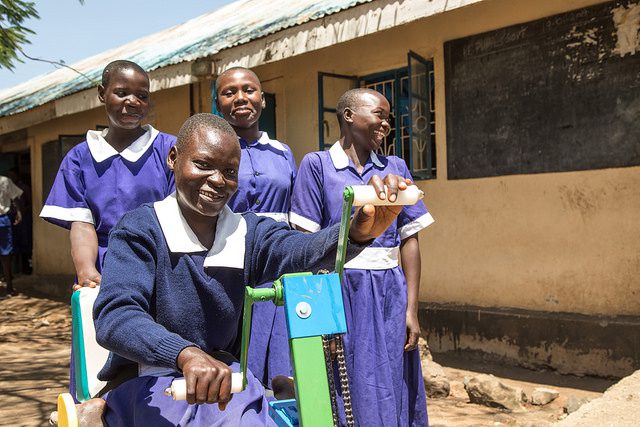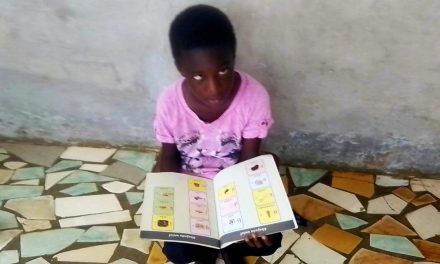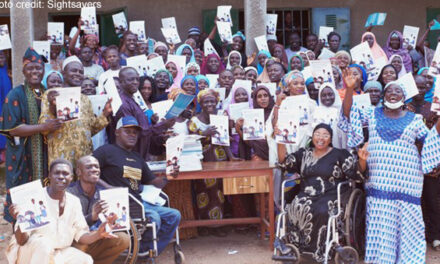By Nidhi Singal, 1st August 2018. This blog was originally posted on the Washington Group website.
At the Global Disability Summit, Ministers of Education and international donors such as DFID, UNICEF and the World Bank made commitments to collect data using questions developed by the Washington Group on Disability Statistics. This is something that needs to be celebrated. For too long persons with disabilities have been made invisible, based on their exclusion from surveys and national censuses.
Gathering disaggregated data is essential for human rights from the perspective of meeting the obligations of non-discrimination and equality. Thus, the right to be counted is an essential aspect of fulfilling the goals of an inclusive society. The data revolution report, A World That Counts (United Nations, 2014) noted:
No one should be invisible. To the extent possible and with due safeguards for individual privacy and data quality, data should be disaggregated across many dimensions, such as geography, wealth, disability, sex and age… Disaggregated data can provide a better comparative picture of what works, and help inform and promote evidence based policy making at every level (p. 22).
Questions developed by the Washington Group are central in these efforts and are being used in national surveys and censuses throughout the world in over 50 countries. The information gathered through these surveys will be powerful in assisting not only planning of resources more effectively but also for monitoring the effectiveness of these programs and for increased advocacy.
However, the call for more data and the greater use of the Washington Group Questions, whilst important, seems to set aside other additional considerations. Discussions at the Summit appeared to frame the data argument purely in a technical manner- a way of estimating prevalence rates of persons with disabilities in any population and disaggregation by disability status. Data, in such discussions, tends to be associated most closely with large scale survey data, where numbers can be used to highlight the magnitude of an issue.
Undoubtedly getting an estimate of how many people are facing varying degrees of difficulties in different functioning domains across age groups are important considerations – both for measuring prevalence and for comparing outcomes between people with and without disabilities. I first used the Washington Group Short Set of Questions in 2005, in the Disability, Education and Poverty Project (DEPP) under the aegis of the Research Consortium on Educational Outcomes and Poverty (RECOUP), across Ghana, India, Kenya and Pakistan. More recent projects that I have been engaged in, such as the Annual Status of Education Report (ASER) and the Teaching Effectively All Children (TEACh) project have used the Short Set of Questions and the Module on Child Functioning, respectively. In each instance, the Washington Group questions when included in household surveys have provided very useful insights. Findings from RECOUPclearly noted that young people with disabilities in Pakistan were significantly excluded from school during primary years. Over a decade and half later, data from both ASER (in Pakistan) and TEACh (in India and Pakistan) have highlighted new insights which challenge established wisdom about the education of children with disabilities. For example, contrary to commonly held perceptions, our findings suggest that increased numbers of children with disabilities are getting enrolled in school, though their regular attendance is still a huge concern. Additionally, by gathering associated data on learning outcomes, through simple literacy and numeracy tests administered to children with and without disabilities, we show that children with disabilities are not performing as well as others. These insights are vital in pushing educational efforts on access but also quality of provision for children with disabilities.
However, numbers alone cannot tell the whole story. While they tell us how many children with disabilities are attending school in a given context, they are unable to tell us factors which enable them to reach school, or the most important barriers that prevent their participation. Numbers can tell us how well children are performing on tests, but they do not tell us what factors are influencing and shaping their learning. They do not provide us any understanding of the experiences of children in school.
For instance, while the TEACh survey data from India notes that children with disabilities are attending school, it is through other qualitative studies in India that we can explain why this is happening. Research evidence tells us that there is growing awareness among parents, even among low income families, to educate their child with disabilities. Parents seem to have internalised the benefits of schooling for their children (including for their child with disabilities) and spend considerable time, energy and meagre financial resources to get them into school. Parents are making important decisions, even when faced with limited choices around quality of school provision.
It is only when we talk with parents do we realise that some of the biggest barriers that stop children with disabilities from attending school regularly and transition to higher classes, are not necessarily teacher attitudes or the absence of accessible toilets, but the lack of toilet training skills for their growing son/daughter with disabilities. The fact that parents have no support or training in how to manage day to day activities of their children is so often overlooked in many low and middle income countries. It is in the accounts of parents, their despair and frustrations but also their endeavour to provide for their child with disabilities, that we see how policies and programmes can be shaped to take account of the realities of the lives of persons with disabilities.
Numbers are a critical first step, but to go further, we need to hear the voices and lived accounts of children/people with disabilities and their families. In order to do so we have to harness the potential of integrating quantitative and qualitative evidence, sometimes in innovative ways.





